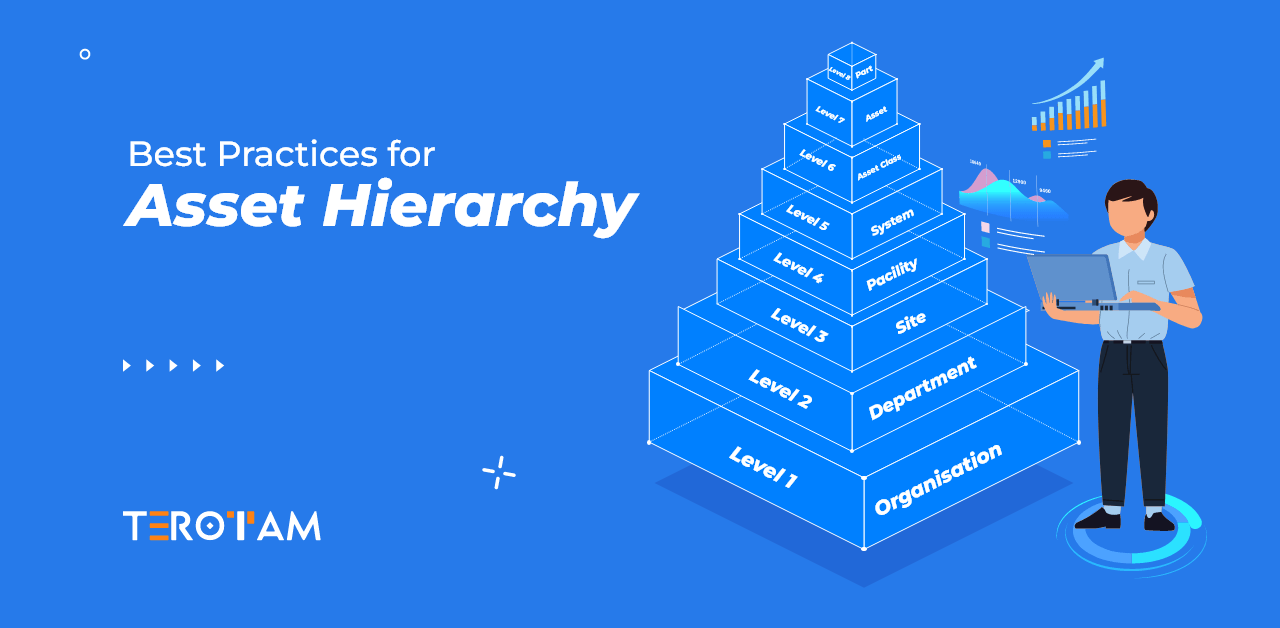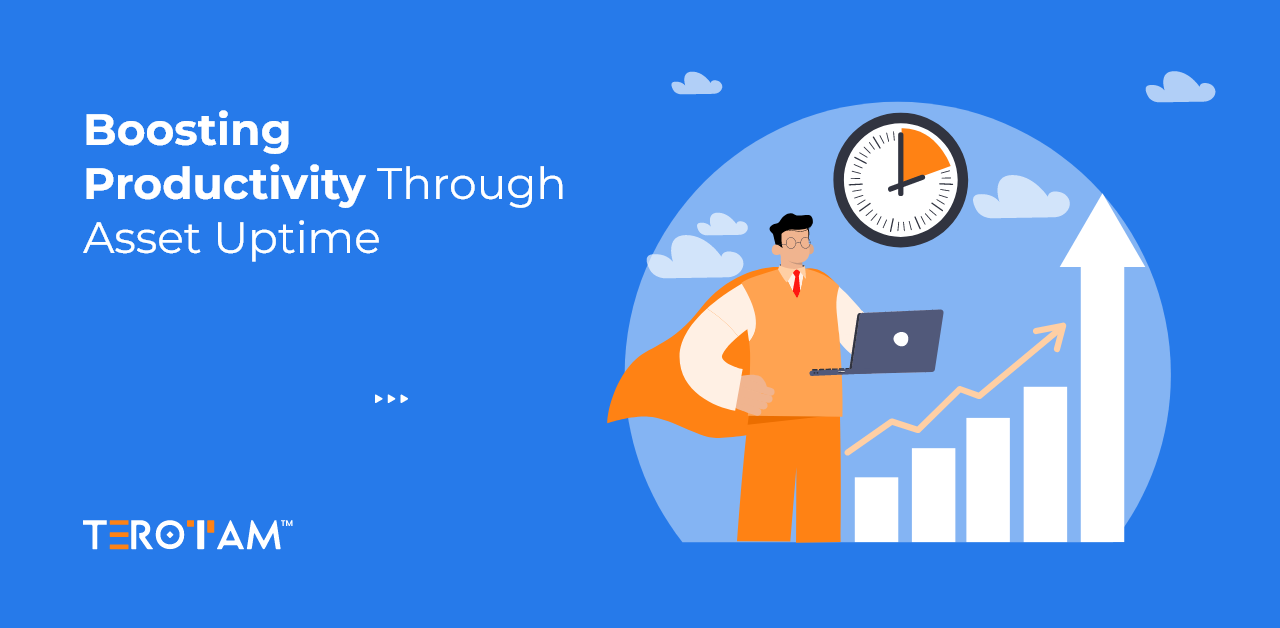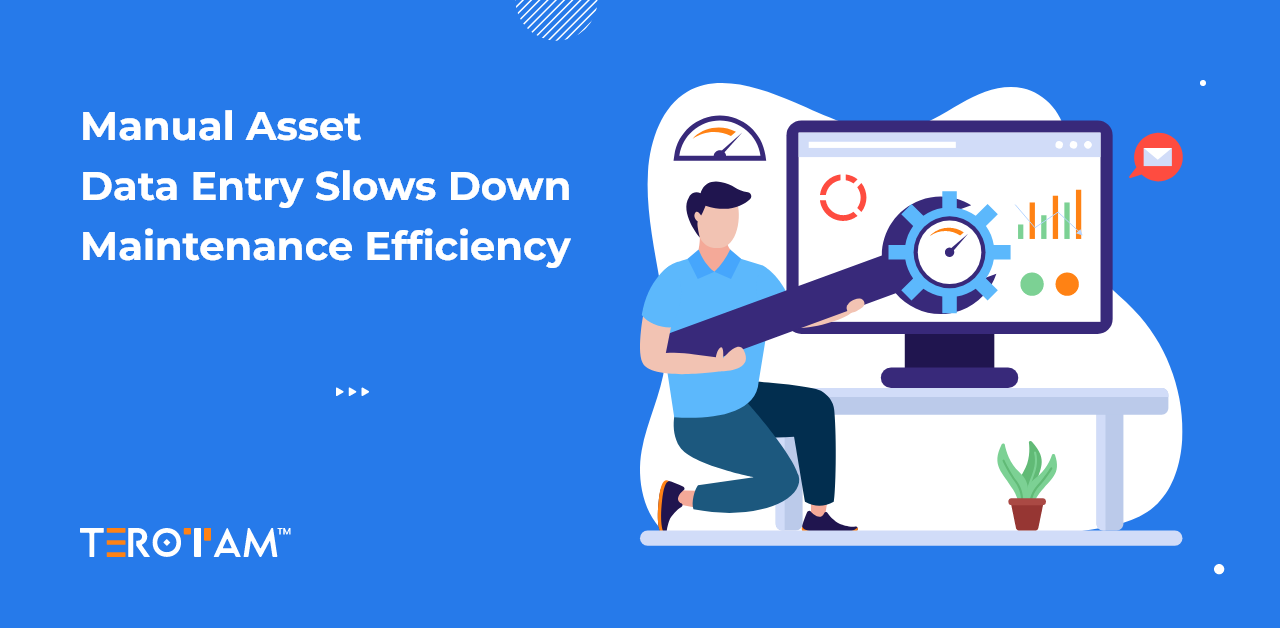Have you stuck on a weekend day over finding a tool or something important around which your whole weekend activity plan works? and if that happened, who better than you to know how frustrating it is when just some missing things ruin all your plans?
Now, this situation is still bearable and causes emotional cost when it happens in personal life, but what if that happens in your business? Not finding the right asset at the right time in the right condition will put you back on your plan, cost you, and may end with you losing clients and potential business, too.
But that can be avoided if you have the asset hierarchy within your asset management with the right Asset management solution. In this article, we will take a tour of asset hierarchy, its importance in asset management, and how you can manage it effortlessly.
What is Asset Hierarchy?
Asset hierarchy is a way of arranging assets in an organization’s setting, through which objects are structured hierarchically to ensure that systematic arrangement, categorization and management take place. This scheme allows for the establishment of frameworks that help define relationships among assets, which makes it possible for asset tracking to be done more effectively, plans for maintenance to be made easily and allocation of resources made simple.
Classification of Assets in Asset Hierarchy
Asset hierarchy involves the classification of assets into hierarchical levels based on various criteria such as:
Functional Classification:
Assets can be organized according to their major functions or role in the organization’s operations. These may include equipment, facilities, infrastructure or systems.
Physical Location:
Assets are organized according to where they are situated within one or more sites belonging to an organization. This helps with spatial organization and management, whereby users can identify the location of assets to be used only within a specific geographical context.
Structural Hierarchical Relationships:
Assets are structurally arranged in parent-child relationships, where higher-level assets (parent nodes) represent broader categories or groups while lower-level ones (child nodes) show individual instances or constituents within those categories. Consequently, this structure supports a top-down approach to asset management and enables drill-down analysis.
What Data Attributes are included in Asset Hierarchy?
Combining attributes and metadata belonging to each asset leads us into the definition of asset hierarchy as it incorporates:
- Asset Specifications: Precise details about an asset like its model numbers, serial numbers; specifications and configurations.
- Asset Ownership: Information about the asset owned and handled and handed over when changed hands for purposes of identifying previous ownership and current owners.
- Maintenance History: Records containing past maintenance activities, including completed dates, tasks, and related costs.
- Operational Data: Performance metrics, usage patterns as well as operational parameters pertinent to functionality and performance requirements of an object.
- Dependency Relationships: Connections between objects illustrating dependencies between objects such as equipment dependencies within a production line or subsystem relationships within a complex infrastructure.
The Importance of Asset Hierarchy in Asset Management
There are several asset management activities that depend on an effective asset hierarchy, which include maintenance, inventory management, resource allocation and strategic planning.
Here are a number of the reasons why asset hierarchy is very important:
Organizational Clarity and Structure
- Asset hierarchy is quite useful In order to manage and maintain assets more easily and have some structure to deal with all this chaos.
- It provides an understanding of their roles as assets related to each other.
- Stakeholders gain clarity on composition of their assets and how they support the business.
- It offers organization features when categorizing assets systematically for ease of reference.
- Hierarchical structure allows one to see the big picture while permitting detailed analysis of individual assets.
Efficient Asset Identification and Tracking
- Users can find all specific assets by sorting according to carefully designed hierarchies.
- Hierarchical structures help with keeping track of property without any problems.
- For instance acquisition through disposal organizations can keep tabs on such items at any time throughout their life-cycle without difficulty.
- It ensures accuracy in managing stock by avoiding loss or misplacement of materials requirements planning assets.
- Assets become visible if they are classified hierarchically thus making it easier for other people to evaluate utilization levels and understand if these components work proportionally or not?
Maintenance Prioritization and Planning
- What must be done first becomes obvious when criticality-based asset hierarchy is used for prioritizing maintenance tasks.
- Through accurate allocation of resources based on hierarchical importance, maintenance scheduling becomes more effortless and efficient.
- Timely attention given to critical systems reduces unplanned downtime’s risks.
- This results in streamlining preventive maintenance scheduling which lead s to increased reliability/asset life span
- The hierarchical classifications allow for proactive maintenance strategies linked to significance of different equipment.
Optimized Resource Allocation
- Resource allocation based on high-impact assets is directed by asset hierarchy
- Organization can achieve better efficiency as resource wastage is minimized through targeted deployment made possible by this system.
- When it comes to labor, materials and equipment, organizations optimize their use based on the asset hierarchy.
- This ensures that resource allocation is in line with asset sensitivity hence optimizing assets’ performance.
- Hierarchical structure enhances resource planning, supporting cost-effective asset management strategies.
Data Standardization and Reporting
- If all the data collected are standardized as per the asset hierarchies, it would be easy to analyze them and make a conclusion about the quality of these components.
- Standard data formats enable such accurate analysis and comparison of different parameters connected with property maintenance operations
- However by using hierarchical information organizations get more practical insights for decision making purposes.
- Structured asset hierarchies make reporting easy, ensuring reliability as well as accuracy of data reported this way.
Steps to Follow When Creating Asset Hierarchy
An effective asset hierarchy cannot be done haphazardly, it requires a systematic approach. Here are the steps to be followed.
Define Specified Asset Categories:
Start your asset hierarchy creation with defining asset categories or asset types for your organization like equipment, facilities, vehicles,Tools & machines, etc.
Identify Needed Hierarchical Levels:
Develop levels of hierarchy as per location, function, work departments or criticality of assets in organization workflow.
Assign Relationships and Dependencies:
Define relationships and dependencies between different levels of the hierarchy to accurately represent asset interconnections and dependencies.
Standardize Nomenclature:
Ensure consistency in terms used for referring assets and hierarchical levels for clarity and uniformity across the organization.
Incorporate Metadata and Attributes:
Enhance the hierarchy with metadata and attributes such as asset specifications, maintenance history, and performance metrics to provide additional context and insights.
Do’s and Don’t for Creating and Managing Asset Hierarchy:
Organizations have to avoid several things when creating an asset hierarchy otherwise this can limit its effectiveness. These mistakes include:
- Don’t make the structure too complicated; Make it easy for navigation ease instead.
- Don’t Ignore the flexibility. Try to develop for a future that is scalable enough.
- Avoid Disregarding stakeholder’s input. Engage end users so that their operational requirements find a place in what is produced at last point of action
- Don’t ignore standardization. Have consistent naming conventions as well as classification criteria..
- Don’t practice poor documentation techniques. Transparency is ensured through detailed documentation as well as sharing knowledge..
- Avoid Lack of reviews/updates; Thus re-evaluate more frequently so that it remains relevant..
- Make sure there are no practices of Underestimating maintenance needs- think about the ongoing support required within plan development..
- There should not be a lack of fine structure – Avoid too much complexity in constructing a good structure which has enough details..
How CMMS Software Helps in Achieving an Effortless Asset Hierarchy Management?
CMMS software plays a decisive role in making asset hierarchy management easier through the provision of powerful and functional features that are designed specifically for asset-intensive industries.
How does CMMS software enable effortless asset hierarchy management to occur:
Centralized Asset Repository:
For example, hierarchical relationships, maintenance schedules, and documentation are all stored and managed within the centralized repository that is CMMS software.
Hierarchical Visualization:
Through easy navigation, exploration, and analysis of hierarchical structures with intuitive tools offered by advanced CMMS solutions.
Automated Maintenance Workflows:
This includes work order generation, task assignment or scheduling among other processes which CMMS software automates on the basis of the asset hierarchy streamlining.
Real-time Monitoring and Reporting:
With CMMS software; organizations can monitor and track asset performance and maintenance activities as well as generate comprehensive reports for analysis and decision-making.
Conclusion:
As asset hierarchy is of utmost importance in asset management, you need to be very careful and systematic while creating it. However, once it is in place, it can help you streamline your asset management, asset hierarchy, and overall productivity and operational excellence.
Still, if anything specific is there you had in mind about the same and want to discuss, connect with our experts now or write us at contact@terotam.com








